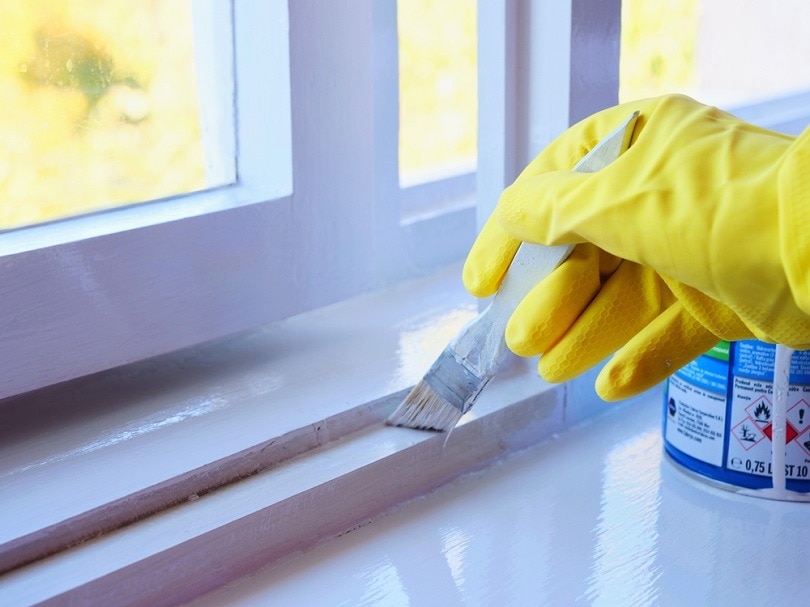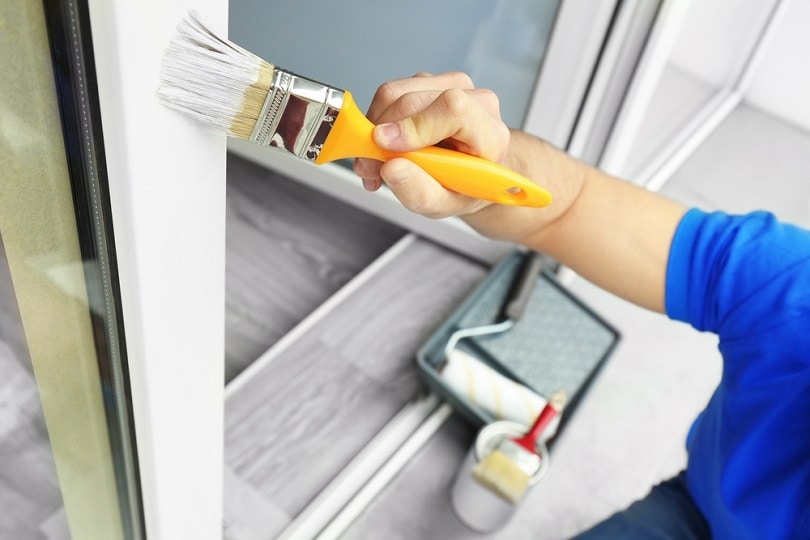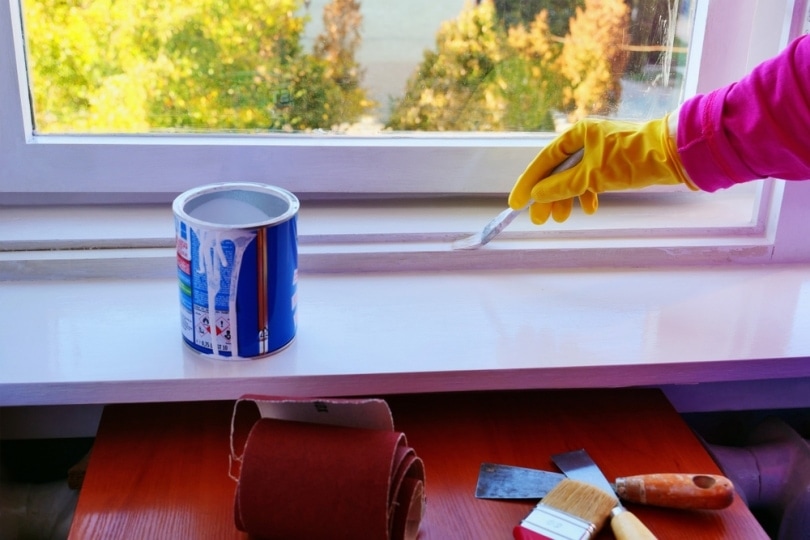Satin vs. Semi-Gloss Paint: What’s The Difference?
-
- Last updated:


We have put together some information on the difference between the two types of paint. If you want to know where to apply each one, the best way to apply it, and which one is more durable, then we have you covered. We will also give you some extra tips, plus some clean-up info. If you are curious about the difference, keep on reading below.

When To Use Satin and Semi-Gloss
Determining when to use each finish can be difficult. The main difference between the two is that satin has less gloss-medium than semi-gloss. When you purchase paint, many people think choosing their color is the hardest part; until they get to the mixing counter and are asked which finish they would like. Finishes can range from flat/matte all the way to gloss. Satin and semi-gloss are two of the more popular choices, however.

The first thing to note is the color you are choosing. The more gloss in the paint, the more it will reflect the sun. This can change your color’s appearance slightly. Semi-gloss, which has more sheen, reflects the sun to the point where the shade may look lighter. On the other hand, satin can look slightly darker as the lower gloss levels can absorb some of the light.
The next consideration is the condition of the substrate you wish to paint. As mentioned, the more sheen a paint has, the more it is going to attract light; and thus, making any stains or imperfections noticeable. If you are dealing with new construction, you can safely go with semi-gloss; otherwise, you may need a lot of sanding and patching before applying the paint.
Traffic is another good point. The higher the gloss content, the more it protects the surface of the substrate. This makes semi-gloss better suited for kitchens, bathrooms, or playrooms. Satin, on the other hand, works better with offices, dining rooms, etc. In comparison to flat paint, satin is also more durable.
Finally, personal preference is always a consideration. Many homeowners like to use high shine on doors, windows, and trim to highlight those areas. Semi-gloss is also used for shelving, bookcases, or built-in entertainment centers.
The Application Process
Both satin and K are a little more tricky to apply than flat paint. The higher the shine, the more difficult it will be to apply. Although you can use a paintbrush with either, a roller or paint sprayer is recommended if you have the skill level. Semi-gloss, specifically, looks more professional and smooth when applied with a paint sprayer.
When using either finish, it is important to patch any imperfections in the substrate and sand down the area as best you can. You can use either a standard piece of sandpaper or an electric hand sander. The smoother you can get your walls or whatever surface you are painting, the better the paint will apply.

When rolling with satin, it’s important to roll straight up and down. Going from vertical to horizontal can cause a visible difference in the sheen of the paint once it is dry. You will be able to see a visible patter in the paint from certain angles.
Semi-gloss is even more difficult. If you choose to roll it out, it is important to paint in verticle lines and you have to move fast. To keep the paint from flashing, you need to have a wet edge to connect to the next stripe of paint. For example, if you take a break for lunch in the middle of painting a wall, the paint may be dry when you return. If you start to paint again, putting the wet over the dry, it will cause a visible difference in the paint. This is called flashing.
Flashing can happen with both satin and semi-gloss, though it is more noticeable with higher sheen levels. As a result, it is best to complete each wall before stopping. This is also why paint spraying is better for semi-gloss as it makes the work go quicker and leaves the paint with no roller marks. You do have to have some level of skill for this, however.
Maintenance and Durability
While both options are durable, semi-gloss tends to win out as it protects the paint from stains and other marks. Satin is also durable, but will not last as long. Cleaning both finishes is also fairly easy as you can wipe down the area to remove fingerprints and stains fairly easy.
That being said, higher sheen options are going to show smudges and fingerprints easier than satin due to the light reflection. Also, satin will wear down quicker than its counterpart over time from scrubbing.
Just as paint can be tricky, so can touch-ups. Both finishes can have flashing when touch-ups are done. Most people prefer to wait until a repaint is needed versus adding additional paint. Flashing can look as bad as stains in semi-gloss walls. If you do need to touch up, try to stay within the area that is stained as best you can without overlapping onto the dry paint.
Cost
Cost can be another big factor in the decision making process for many people. Typically, the more gloss medium that is added to the paint, the higher the cost will be. This can depend on brand, however.
Also important is that the higher the sheen, the more sanding and prep work will be needed on the substrate. This can add up quickly if you are having the work done by a professional painter. Finally, consider that semi-gloss tends to last longer than satin, so the time between repaints will be longer.
Conclusion
We hope this has shed some light on the difference between the two paint finishes. The most important thing to remember is that the higher the gloss level, the more the light is going to reflect, making any imperfections more visible.
Just as important, though, the more gloss, the better the paint will stand up to high traffic. Depending on your personal preference, either paint can add a nice touch to the home ambiance.
Related Reads:
- SATIN VS. FLAT PAINT: WHAT’S THE DIFFERENCE?
- POWDER COATING VS PAINTING: WHICH IS BETTER?
- PAINT THINNER VS. ACETONE: WHAT’S THE DIFFERENCE?
Featured image credit: Whiteaster, Shutterstock
Contents

